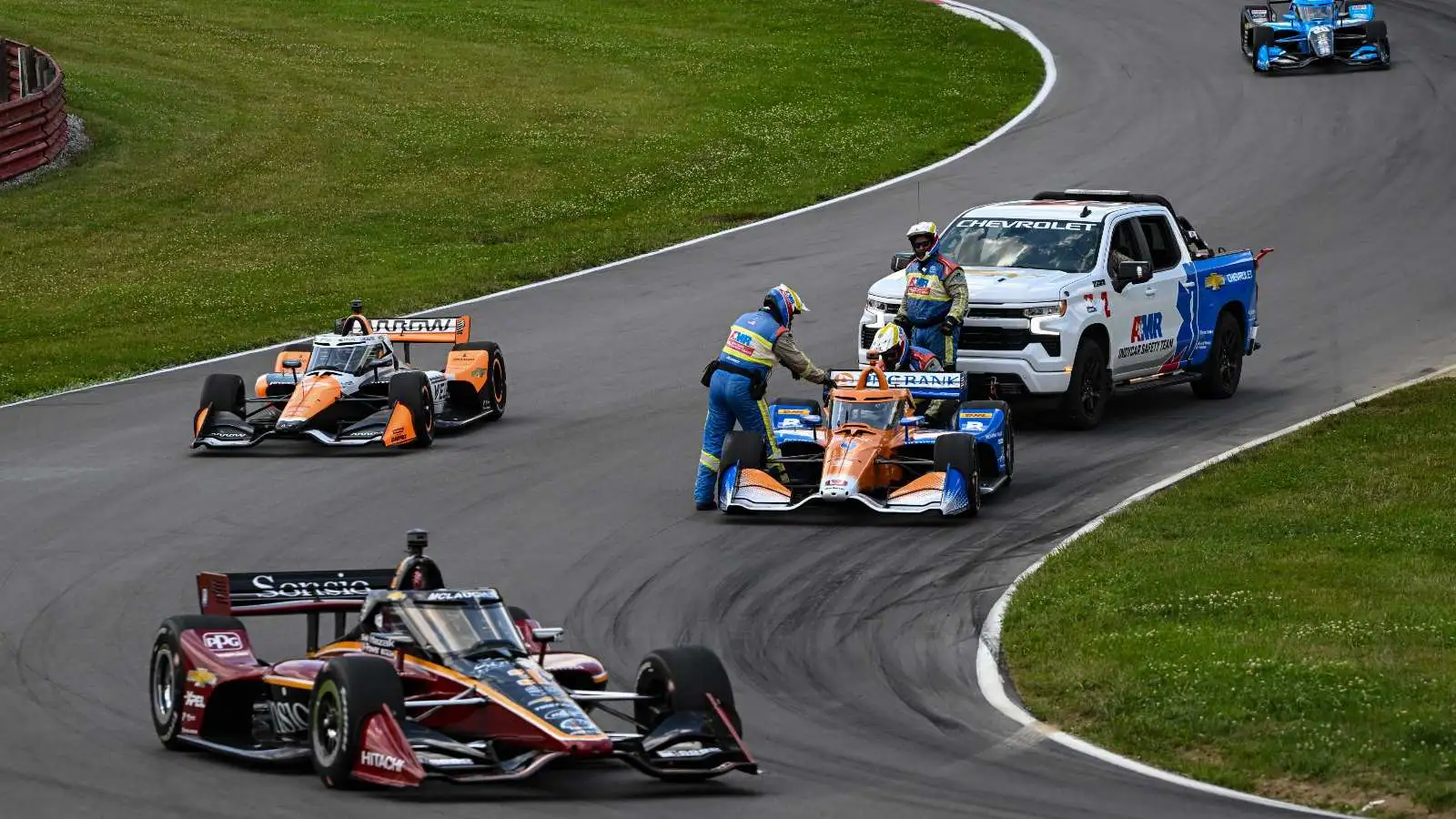The IndyCar safety feature that Formula 1 should be scrambling to ...

At every IndyCar race, drivers know that in the event of an accident, the same rotating staff of emergency responders and physicians will be taking care of them. There’s comfort in that kind of consistency, but it’s not the only groundbreaking element of IndyCar’s medical crew.
That crew has been at the forefront of countless safety innovations and was crucial in legitimizing motorsport as a unique discipline of study in the medical world. Today, we’re looking at the evolution of that safety crew, and why F1 should consider adopting a permanent emergency response staff.
IndyCar medical: at the forefront of safety innovationToday, IndyCar brings the same group of emergency responders and safety officials to every single race. Known as the AMR Safety Team, the crew consists of 30 safety personnel, with a minimum of 18 of those people attending each event.
There must be one trauma physician, one orthopedic physician, two paramedics, two registered nurses, and 12 firefighters or EMTs on hand. The team travels with four state-of-the-art Holmatro safety vehicles that feature top-tier technology, as well as with an incredible mobile medical unit featuring two hospital beds, X-ray machines, a resuscitation cart, and orthopedic care supplies, as well as video feeds for staff to monitor on-track action and four different areas for consultation.
That crew can reach an accident in as little as 30 seconds, and because the safety staff know their way around a race car, extrication can take mere moments.
This story is a tie-in to Elizabeth Blackstock’s podcast, “Deadly Passions, Terrible Joys.” Her latest episode centers on the evolution of IndyCar’s medical and safety teams, and the groundbreaking work it has done in the realm of trauma care.
The AMR Safety Team, though, is the result of a decadeslong pursuit to make racing safer for the drivers, against all odds.
See, in the earliest days of motorsport, the concept of “safety” really only applied to spectators. It was assumed that drivers understood the risks of competition, that they accepted them, and that if they were willing to put their lives on the line, then there was no reason to make the act of competing safer.
In Europe, drivers like Jackie Stewart led the charge to improve the conditions of race tracks, as well as in the implementation of driver safety devices. But the safety movement progressed a little differently in the United States.
Formula 1 and IndyCar, compared:???? Aeroscreen: The life-saving IndyCar technology that was rejected by Formula 1
???? IndyCar vs Formula 1: Junior driver development series ladders compared
Exact dates are difficult to pin down, but the Indianapolis Motor Speedway had hired doctors or recruited volunteers to work at the track during the month of May — when, for an entire month, drivers from around the country descended on the track to compete for victory at the 500-mile race.
Dr. Thomas Hanna was brought on in 1936, and he quickly set to work building a permanent infield care center — one of the first of its kind in motorsport. Along the way, American open-wheel tracks recruited local funeral homes to donate their hearses to serve as emergency response vehicles.
But a young doctor named Stephen Olvey joined the Indianapolis Motor Speedway safety team in 1966, and he was one of the first people to really take the study of motorsport emergency response seriously.
Olvey kept detailed notes about every accident he responded to, the care he offered, and the rehabilitation needed after the fact. When he was put in charge of the medical team in CART, he and orthopedic surgeon Dr. Terry Trammell began to publish some of the first-ever studies analyzing the specific injuries caused by racing crashes.
The publication of that data led to a multitude of different innovations. It helped the CART series develop safer cars, ones that were designed to specifically reduce the kinds of injuries drivers were receiving. It illustrated just how drastically motorsport crashes differed from highway crashes. It also highlighted the importance of a rapid response in an emergency.
The primary factor that allowed for the miraculous recoveries of drivers like Chip Ganassi or Alex Zanardi came from the fact that emergency personnel were on the scene immediately to secure airways, begin treatment, and head to the hospital. Knowing that, American open-wheel racing developed state-of-the-art emergency response vehicles and infield care centers that could respond to serious trauma.
Critically, the drivers knew that in the event of an accident, they’d be greeted by emergency response personnel they’ve already become acquainted with, and those responders would have ample experience dealing with high-speed racing injuries.
Formula 1 has long declined to implement a similar procedure; it would cost far more money to ship permanent safety crew members and specialized equipment from one race to the next in F1 than in IndyCar. There may also be concerns about whether or not a traveling safety crew would legally be able to, say, practice medicine in different countries. But if any series could find a way to make its permanent safety crew work, it would be Formula 1.
Read next: Loud engines, South American races: How Pato O’Ward believes IndyCar can challenge Formula 1









































